Are your hamstring muscles persistently tight, limiting your flexibility and causing discomfort? At WHY.EDU.VN, we understand how frustrating tight hamstrings can be. This article dives deep into the reasons behind hamstring tightness, providing actionable solutions to improve your flexibility, alleviate pain, and prevent future issues. We will explore effective stretches, lifestyle adjustments, and expert advice to help you achieve lasting relief. Addressing hamstring tightness involves understanding potential underlying issues and choosing the appropriate interventions.
1. What Causes Tight Hamstring Muscles?
Tight hamstring muscles can stem from a variety of factors, making it essential to understand the root cause for effective treatment. Here are some of the most common reasons why your hamstrings might feel so tight:
- Sedentary Lifestyle: Prolonged sitting shortens the hamstrings, leading to chronic tightness.
- Lack of Stretching: Insufficient stretching before and after physical activity can cause the hamstrings to tighten.
- Muscle Imbalances: Weak glutes and core muscles can force the hamstrings to overcompensate, leading to tightness.
- Poor Posture: Incorrect posture, such as excessive anterior pelvic tilt, can contribute to hamstring tightness.
- Dehydration: Muscles need water to function correctly; dehydration can cause them to contract and tighten.
- Nerve Issues: In some cases, sciatic nerve irritation can manifest as hamstring tightness.
- Overuse: Repetitive activities without adequate rest can strain and tighten the hamstrings.
- Genetics: Some individuals are naturally predisposed to having tighter hamstrings.
- Age: As we age, muscles tend to lose elasticity, which can contribute to hamstring tightness.
- Previous Injuries: Old hamstring injuries that haven’t fully healed can lead to chronic tightness.
2. What are the Common Symptoms of Tight Hamstrings?
Recognizing the symptoms of tight hamstrings is crucial for early intervention and preventing further complications. Here’s a list of common signs and symptoms:
- Limited Range of Motion: Difficulty bending over or touching your toes.
- Pain in the Back of the Thigh: A pulling or aching sensation in the hamstring muscles.
- Lower Back Pain: Tight hamstrings can contribute to lower back pain due to pelvic misalignment.
- Stiffness: A feeling of stiffness or tightness in the hamstrings, especially after prolonged sitting or inactivity.
- Difficulty Sitting for Long Periods: Discomfort or pain in the hamstrings when sitting for extended periods.
- Altered Gait: Changes in walking or running patterns to compensate for hamstring tightness.
- Knee Pain: Tight hamstrings can affect knee mechanics and contribute to knee pain.
- Snapping Hip Syndrome: In some cases, tight hamstrings can contribute to snapping hip syndrome.
- Muscle Cramps: Increased susceptibility to hamstring cramps, especially during exercise.
- Tenderness to the Touch: Pain or discomfort when pressing on the hamstring muscles.
3. What are the Best Hamstring Stretches?
Incorporating specific stretches into your routine can significantly improve hamstring flexibility. Here are some of the most effective hamstring stretches:
3.1. Standing Hamstring Stretch
- Stand upright with your spine in a neutral position.
- Place your right leg in front of your body with your foot flexed, heel pushed into the ground, and toes pointing toward the ceiling.
- Slightly bend your left knee.
- Gently lean forward, placing your hands on your straight right leg.
- Keep a neutral spine.
- Hold the stretch for 10-30 seconds.
- Switch legs. Repeat 2-4 times on each leg.
3.2. Seated Hamstring Stretch
- Sit on the ground with your left leg bent at the knee, foot facing inward (butterfly position).
- Extend your right leg, keeping it slightly bent at the knee.
- Bend forward at the waist, keeping your back straight.
- Hold the stretch for 10-30 seconds.
- Switch legs. Repeat 2-3 times on each leg.
3.3. Lying Hamstring Stretch
- Lie flat on the ground or a mat with your legs stretched out.
- Hold the back of your right knee with both hands, pull it up toward your chest, and slowly straighten your knee until you feel a stretch.
- Hold the stretch for 10-30 seconds.
- Repeat 2-3 times on each leg.
3.4. Lying Hamstring Stretch with Strap
- Lie flat on the ground or a mat with your legs stretched out.
- Bend your right leg and place the strap across the ball of your right foot.
- Hold the strap in both hands.
- Keep your left leg extended on the ground with your foot flexed.
- Slowly extend your right leg with your foot flexed, keeping a slight bend in the knee.
- Gently pull the strap until you feel a slight tension in your hamstrings.
- Hold the stretch for 10-30 seconds.
- Switch legs. Repeat 2-4 times on each leg.
3.5. Wall Hamstring Stretch
- Find an open doorway.
- Lie flat on the ground or a mat, with your back flat and left leg extended through the doorway.
- Lean your right leg against the wall next to the doorway.
- Adjust the distance between your body and the wall to achieve mild tension in your right leg.
- Hold the stretch for 10-30 seconds.
- Switch legs. Repeat 3 times on each leg.
3.6. Chair Hamstring Stretch
- Sit near the edge of a chair with your back straight.
- Keep one foot flat on the floor.
- Stretch the other leg out in front and rest it on another chair.
- Slowly bend forward until you feel a stretch at the back of your thigh.
- Ensure your spine is in a neutral position and your shoulders do not hunch forward.
- Hold the stretch for 10-30 seconds.
- Switch legs. Repeat 2-4 times on each leg.
3.7. Table Hamstring Stretch
- Find a table that is just shorter than hip height.
- Stand upright with your spine in a neutral position.
- Place your right leg on the table with your foot flexed, toes pointing toward the ceiling.
- Bend forward at the waist until you feel a stretch in your hamstring.
- To increase the intensity, bend forward slightly, placing your hands on your leg or the table for support.
- Hold the stretch for up to 30 seconds.
- Wait 15 seconds between each repetition, then repeat 3 times on each leg.
3.8. Foam Roller Hamstring Stretch
- Sit on the floor with your legs stretched straight in front of you.
- Place the foam roller under the hamstring of one leg and bend the other leg with your foot flat on the floor.
- Raise your buttocks off the mat, maintaining balance with your hands flat on the floor.
- Move your body back and forth in long, sweeping movements, stopping just short of the back of your knee.
- Lightly twist your thigh to ensure the roller covers the right, left, and middle of your hamstring muscle.
- Switch legs and repeat the stretch.
4. What are the Benefits of Hamstring Stretches?
Regular hamstring stretches offer several benefits, contributing to overall physical well-being. According to a 2019 research review, flexible hamstrings have many benefits. Here are some key advantages:
4.1. Preventing Lower Back Pain
Tight hamstrings can reduce the mobility of the pelvis, placing extra pressure on the lower back. By stretching the hamstrings, you can prevent them from becoming too tight, providing additional support for your back and pelvis.
4.2. Reducing Injuries
Maintaining loose hamstrings can significantly lower the risk of straining or tearing muscle fibers during strenuous activities like running. Flexible hamstrings allow for a greater range of motion and reduce the likelihood of injury.
4.3. Increasing Flexibility
Regular hamstring stretches increase flexibility and improve the range of motion in the hip. This makes performing everyday tasks, such as walking upstairs and bending over, much easier and more comfortable.
4.4. Improving Posture
Tight hamstrings can cause the pelvis to rotate backward, flattening the natural arch in the back, leading to poor posture whether sitting or standing. Keeping the hamstrings loose helps maintain proper pelvic alignment, improving posture and reducing strain on the spine.
5. When Should You Stretch Your Hamstrings?
Timing your hamstring stretches can enhance their effectiveness. Here are some recommended times to incorporate hamstring stretches into your routine:
- Before Exercise: Gentle dynamic stretches can prepare your hamstrings for physical activity.
- After Exercise: Static stretches can help relieve muscle tension and promote recovery.
- Daily: Regular stretching, even for a few minutes a day, can improve overall flexibility and prevent tightness.
- After Prolonged Sitting: If you spend long periods sitting, take breaks to stretch your hamstrings and counteract the effects of inactivity.
- When Feeling Tightness: If you notice your hamstrings feeling tight, take a few minutes to stretch them and relieve the tension.
6. What are Some Tips for Stretching Hamstrings?
To maximize the benefits of hamstring stretches and avoid injury, consider these tips:
- Warm-Up First: Always warm up your muscles before stretching to increase blood flow and reduce the risk of injury.
- Stretch Gently: Avoid bouncing or forcing the stretch. Instead, ease into the stretch and hold it steady.
- Breathe Deeply: Focus on breathing deeply and evenly throughout the stretch.
- Listen to Your Body: Stop stretching if you feel any sharp or intense pain.
- Hold Each Stretch: Hold each stretch for 10-30 seconds to allow the muscles to relax and lengthen.
- Repeat Stretches: Repeat each stretch 2-4 times to improve flexibility and reduce tightness.
- Stay Consistent: Consistency is key. Aim to stretch your hamstrings regularly, even if it’s just for a few minutes each day.
7. What are Other Ways to Release Tight Hamstring Muscles?
In addition to stretching, several other methods can help release tight hamstring muscles:
7.1. Massage Therapy
Massage can help relieve tightness and tension in the hamstrings. Different types of massage techniques can be used, but it’s essential to consult a doctor before trying any new massage therapy.
7.2. Physical Therapy
Physical therapy may be appropriate if your muscle tightness results from an injury or restricted range of motion. A physical therapist can guide you through specific exercises, stretches, and other techniques to improve flexibility and strength.
7.3. Foam Rolling
Using a foam roller on your hamstrings can help release muscle knots and improve flexibility. Foam rolling can be done before or after exercise to help reduce muscle tension.
7.4. Myofascial Release
Myofascial release techniques can help release tension in the fascia, the connective tissue surrounding your muscles. This can improve flexibility and reduce pain.
7.5. Strengthening Exercises
Strengthening the muscles surrounding the hamstrings, such as the glutes and core, can help improve stability and reduce strain on the hamstrings.
8. What Exercises Can Help Strengthen Hamstrings?
Strengthening your hamstrings can improve their function, reduce the risk of injury, and alleviate tightness. Here are some exercises to consider:
- Hamstring Curls: Use a machine or resistance band to perform hamstring curls, which target the hamstring muscles directly.
- Deadlifts: Deadlifts are a compound exercise that works the entire posterior chain, including the hamstrings.
- Glute Bridges: Glute bridges strengthen the glutes and hamstrings, improving stability and reducing strain on the hamstrings.
- Good Mornings: Good mornings are an exercise that targets the hamstrings and lower back, improving flexibility and strength.
- Kettlebell Swings: Kettlebell swings are a dynamic exercise that works the hamstrings, glutes, and core.
- Nordic Hamstring Curls: Nordic hamstring curls are an advanced exercise that strengthens the hamstrings eccentrically.
9. Can Lifestyle Changes Impact Hamstring Tightness?
Yes, several lifestyle changes can positively impact hamstring tightness:
- Stay Hydrated: Drink plenty of water to keep your muscles hydrated and flexible.
- Maintain Good Posture: Practice good posture while sitting and standing to reduce strain on your hamstrings.
- Take Breaks from Sitting: Get up and move around every 20-30 minutes to prevent your hamstrings from tightening.
- Proper Footwear: Wear supportive shoes that provide adequate cushioning and stability.
- Ergonomic Setup: Ensure your workstation is set up ergonomically to reduce strain on your body.
- Regular Exercise: Incorporate regular exercise into your routine to maintain muscle strength and flexibility.
- Balanced Diet: Eat a balanced diet with plenty of nutrients to support muscle health.
10. When to Seek Professional Help for Tight Hamstrings?
While stretching and lifestyle changes can help, sometimes professional intervention is necessary. Consider seeking help from a healthcare provider if:
- Pain is Severe: If you experience severe pain that doesn’t improve with home treatment.
- Numbness or Tingling: If you have numbness or tingling in your legs or feet.
- Weakness: If you experience weakness in your legs.
- Limited Range of Motion: If your range of motion is severely limited.
- Chronic Tightness: If you’ve tried stretching and other methods without improvement.
- Injury: If your hamstring tightness is due to an injury.
- Underlying Medical Condition: If you have an underlying medical condition that may be contributing to your hamstring tightness.
A healthcare professional can help determine the cause of your hamstring tightness and recommend the most appropriate treatment plan.
| Aspect | Description |
|---|---|
| Stretching | Regular hamstring stretches can keep these muscles loose and flexible, improving posture, increasing flexibility, and preventing lower back pain. |
| Strengthening | Exercises like hamstring curls and deadlifts can improve hamstring strength and reduce the risk of injury. |
| Lifestyle Changes | Staying hydrated, maintaining good posture, and taking breaks from sitting can positively impact hamstring tightness. |
| Professional Help | Seek professional help if you experience severe pain, numbness, weakness, limited range of motion, or chronic tightness. |
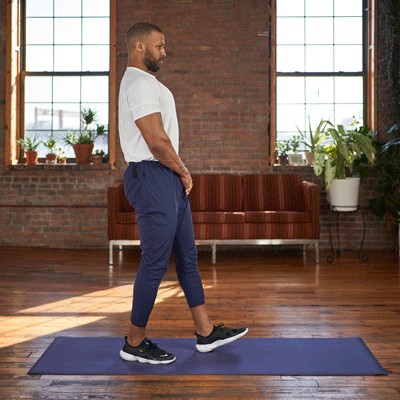
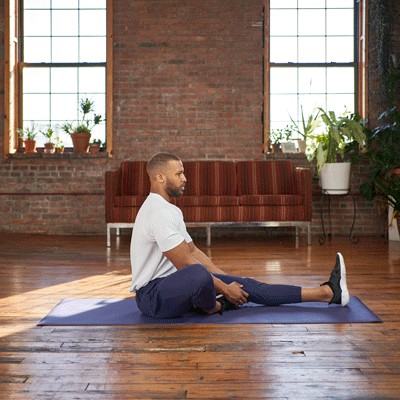
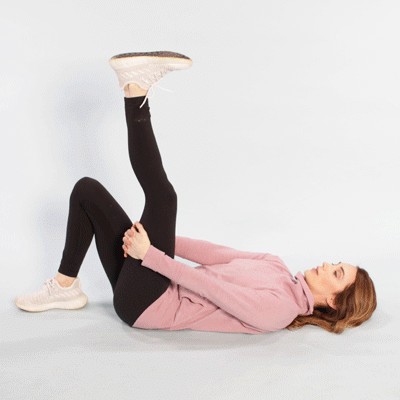
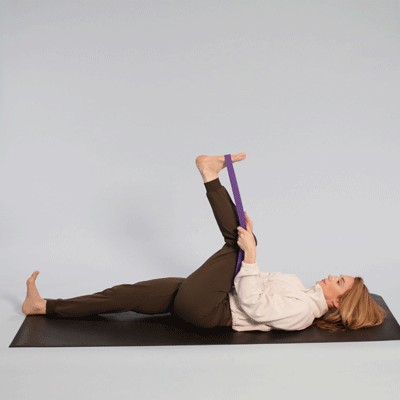
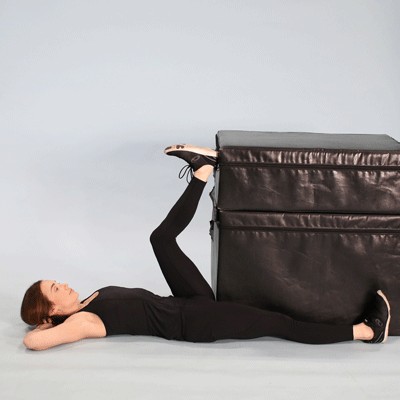
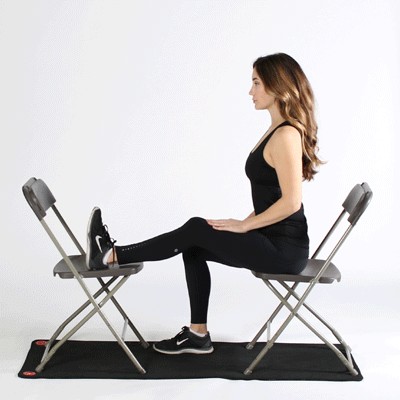
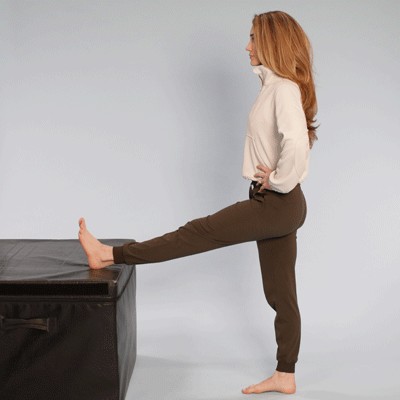
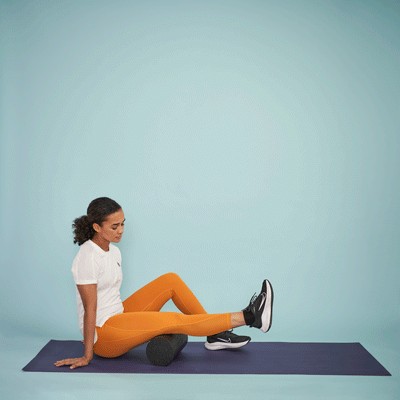
FAQ: Addressing Your Hamstring Concerns
Here are some frequently asked questions to further clarify the topic:
1. Why are my hamstrings so tight in the morning?
Hamstrings can feel tighter in the morning due to decreased blood flow and muscle inactivity during sleep. Gentle stretching can help alleviate this.
2. Can stress cause tight hamstrings?
Yes, stress can lead to muscle tension throughout the body, including the hamstrings. Practicing stress-reducing techniques can help.
3. Are tight hamstrings genetic?
Genetics can play a role in muscle flexibility. However, lifestyle factors often have a greater impact on hamstring tightness.
4. How do I know if my hamstrings are tight?
Signs of tight hamstrings include difficulty touching your toes, pain in the back of your thigh, and lower back pain.
5. Can tight hamstrings cause knee pain?
Yes, tight hamstrings can affect knee mechanics and contribute to knee pain.
6. What is the best way to stretch hamstrings before running?
Dynamic stretches, such as leg swings and walking lunges, are ideal for preparing hamstrings for running.
7. Can massage help tight hamstrings?
Yes, massage can help relieve tension and improve flexibility in tight hamstrings.
8. How long does it take to loosen tight hamstrings?
It can take a few weeks to a few months to relieve tightness with a regular therapy program, depending on the cause and degree of tightness.
9. How many times a day should I stretch my hamstrings?
People can stretch their hamstrings daily, ensuring they use the correct form and avoid overstretching.
10. Is it better to stretch hamstrings when they are warm or cold?
It is generally better to stretch hamstrings when they are warm, as this increases blood flow and muscle elasticity.
Conclusion: Take Control of Your Hamstring Health
Tight hamstrings can be a significant source of discomfort and limitation, but with the right knowledge and approach, you can effectively address this issue. By understanding the causes of hamstring tightness, incorporating targeted stretches and exercises into your routine, and making beneficial lifestyle changes, you can improve your flexibility, alleviate pain, and enhance your overall well-being. Remember to listen to your body, seek professional help when needed, and stay consistent with your efforts.
At WHY.EDU.VN, we’re committed to providing you with the information and resources you need to live a healthier, more active life. If you have further questions or require personalized guidance, don’t hesitate to reach out. Our team of experts is here to support you every step of the way.
Are you tired of searching endlessly for reliable answers to your health questions? Do you crave expert advice tailored to your specific needs? Visit why.edu.vn today and experience the difference. Ask your questions and unlock a world of knowledge. Our team of professionals is ready to provide you with the clear, accurate, and trustworthy information you deserve. Contact us at 101 Curiosity Lane, Answer Town, CA 90210, United States. Whatsapp: +1 (213) 555-0101. Your journey to better health starts here.
